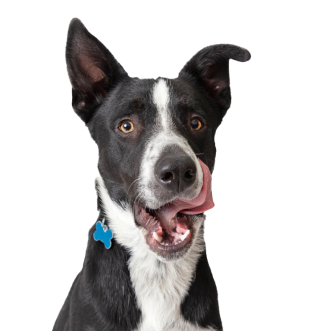
-
Find the right food for your petTake this quiz to see which food may be the best for your furry friend.Find the right food for your petTake this quiz to see which food may be the best for your furry friend.Featured products
 Adult Chicken & Barley Recipe Dog Food
Adult Chicken & Barley Recipe Dog FoodSupports lean muscle and beautiful coat for adult dogs
Shop Now Adult Small & Mini Lamb Meal & Brown Rice Recipe Dog Food
Adult Small & Mini Lamb Meal & Brown Rice Recipe Dog FoodFor the faster metabolism of Small & Mini dogs
Shop Now Puppy Lamb Meal & Brown Rice Recipe
Puppy Lamb Meal & Brown Rice RecipeVital nutrients to support 5 essential building blocks for lifelong health
Shop NowFeatured products Hill's Science Diet Adult Sensitive Stomach & Skin Chicken Recipe Dog Food
Hill's Science Diet Adult Sensitive Stomach & Skin Chicken Recipe Dog FoodHighly digestible recipe, gentle on stomachs. Nourishes skin & promotes a lustrous coat
Shop Now Adult Indoor Chicken Recipe Cat Food
Adult Indoor Chicken Recipe Cat FoodSupports energy level and beautiful fur in indoor cats
Shop Now Adult Chicken & Barley Recipe Dog Food
Adult Chicken & Barley Recipe Dog FoodSupports lean muscle and beautiful coat for adult dogs
Shop Now -
Dog
- Dog Tips & Articles
-
Health Category
- Weight
- Food & Environmental Sensitivities
- Urinary
- Digestive
- Joint
- Kidney
-
Life Stage
- Puppy Nutrition
- Adult Nutrition
- Senior Nutrition
Cat- Cat Tips & Articles
-
Health Category
- Weight
- Skin & Food Sensitivities
- Urinary
- Digestive
- Kidney
-
Life Stage
- Kitten Nutrition
- Adult Nutrition
Featured articles Pet Dental Health: What Happens During a Deep Teeth Cleaning?
Pet Dental Health: What Happens During a Deep Teeth Cleaning?Learn about veterinary dental care for your pet, including deep teeth cleaning procedures, which can help your dog or cat maintain proper dental health.
Read More My Pet Ate a Lizard — What Should I Do?
My Pet Ate a Lizard — What Should I Do?Learn what to do if your pet eats a lizard, including whether they can be toxic and symptoms to keep an eye on when they've swallowed one.
Read More Virtual Vet Visits: What You Need to Know
Virtual Vet Visits: What You Need to KnowLearn the ins and outs of a televet appointment before you talk to a vet online.
Read More -


Congratulations — It's time to bring home your new puppy! You know how important socialization and good behavior is for a family pet, and you're invested in starting a puppy obedience training program in your home right from the start. Plus, puppy training builds a bond between a dog and his new human family. But where do you start?
- What exactly is obedience training?
- What bad behaviors to keep an eye on
- Homeschooling your obedience training
- Seeking help of a professional trainer
What Is Puppy Obedience Training?
Obedience training helps your pet learn his role in your family and in the world. It will teach him the skills he needs to interact with other dogs and with the people inside and outside your home. Puppy training is the first step to teaching healthy behaviors and avoiding negative ones. Often, dogs start their training by learning simple commands, such as "sit" and "stay," though later on they may be trained in more specific ways, such as how to stay in a crate without whining or how to sit patiently without begging while the family eats dinner.
The best part of training your puppy at home is that you can personalize your efforts to your dog and your lifestyle. There's no right or wrong skills you should start with. The most important part is teaching the skills your dog needs to be a good listener and follow your directions.

Behaviors to Watch Out For
It's important to know what type of issues you're looking to avoid so that you can teach your dog good habits right from the start. Some pet parents hope to ward off excessive barking, while others are worried about their dog chewing on non-food items (like dangerous house plants or their shoes). Digging, begging, biting, stealing food and urinating in the home are other issues pet parents look to avoid.
Reading Your Puppy's Body Language
Dinner time is often one of the hardest times to teach obedience to your puppy. He sees you as the pack leader eating a delicious meal and looks up at you with those big puppy eyes and you can't help but give in. This is where you have to be strong and avoid feeding him table scraps. This will help keep off unwanted weight and teach him that begging doesn't get him anywhere. Make sure the whole family follows this rule. Bad training behavior by one family member can derail everything you're trying to teach your pup.
Signs of Aggression or Submission
If your puppy is feeling brave or aggressive, he'll try to make himself larger by standing tall, with his ears and tail sticking upright. He'll also push out his chest and raise the hair on his neck and back. He might also growl and wave his tail slowly.
On the other hand, a submissive dog will try to make himself appear small and act like a puppy. This is because an adult dog will "tell off" a puppy but not attack him. Submission will take the form of a sideways crouch near to the ground, his tail held low but wagging away. He may also try to lick the face of the dominant dog or human. He may even roll on his back.
In either case, it will require you to help train him out of these behaviors. Either by reducing aggression or helping him feel more confident and not shrinking back.
Barking or Whining
While barking and whining can get a little annoying or even embarrassing, you need to remember that it is a natural part of your dog's behavior and communication. So, it's important to work with your pup to know when it is okay to bark and when it is not. After all, you want your dog to alert you if he hears an intruder, but not every time he sees a squirrel.
Whining on the other hand is something you should never reward. When your dog whines and you go to comfort him, you are just reinforcing the behavior and he will continue to whine so you will come and comfort him. In this case, you will need to ignore your puppy whines — yes, it will be very difficult, but you will appreciate it when the whining stops and you can finally get a full night's sleep.
Finally, socialization with children and other animals is a key reason people begin puppy obedience training. In order to invite people into your home and bring your dog out in public, you want to feel confident that he can communicate in a safe, social manner with his furry peers and people of all ages. Children often make pets very skittish, so showing them how to behave around children — even if none live in your home — is an integral part of training. Your dog may still come across children on a walk, and you want to know that their often erratic or in-your-face behavior won't upset or scare your pet.
While you may be more concerned about one or two issues, it's important to work on all behavior and socialization training when introducing obedience training at home. Having an idea about what you want to focus on in the beginning will help you get off to the right start. Just remember to touch on all behavior concerns throughout the time you spend training.


Tasty Tips
Homeschooling Obedience School
Puppies are ready and willing to learn, so it's important to start teaching immediately once you bring your new dog home. Any time spent allowing negative behaviors could become a setback, so get your puppy started off on the right paw. Here are some puppy obedience training tips to implement in at-home lessons.
Keep Training Short
Puppies don't have very long attention spans, so keep all the puppy training sessions short. Practice one command for five minutes at a time, and again later when you have opportunities outside of training sessions. Your dog can only do one thing at a time, so focus on one skill and move on once he has mastered it. You should also always end the training on a positive note so your pet is excited for his next lesson.
Be Consistent
When you were a kid in school, what helped you learn your spelling words and multiplication tables? Practice! Consistency is key to training your new puppy. He not only needs to keep practicing commands over and over with you, but he also needs you to be consistent with your approach. This means always reinforcing his training, even when you're tired or busy. For example, if you're cooking dinner and your dog is giving you the signal that he needs to go outside and relieve himself, turn off the oven and guide him outside immediately. Use the same command words when teaching him simple campaigns like "sit" or "stay" or "no." This helps to reinforce that each word is associated with a specific command you wish him to take.

Practice Training Everywhere
You want your puppy to be able to respond to you in various situations and places, so be careful not to limit training to one room of your house or corner of the yard. Practice commands in your home, backyard, front yard, surrounding neighborhood, woods, park or in any other location you visit with your pet. There are different distracting smells and noises in new areas, and you want to be sure your dog can still perform what he knows in different environments.
Similarly, while it helps to have one adult assert themselves as the pack leader, your dog should also be trained by every member of your family. Part of puppy obedience training is simply learning where your pet falls in the order of the pack, so everyone needs to be involved. This also teaches your pet to follow commands by all humans and not just one leader.
Reward Your Puppy
Dogs are highly motivated by praise and rewards. Create positive associations for your puppy when he follows your commands by verbally encouraging him or sharing a bite of kibble or healthy dog treats. Rewards not only make training more fun for your pet, but also give him something to work for. Just make sure that treats don't make up more than ten percent of his caloric intake each day to ensure he doesn't put on any unnecessary weight.
Dogs are motivated by pleasing their owners, but also (like humans) seek opportunities for praise and rewards. Just make sure to wean your dog off of a treat once he starts to master a particular command. This will give him the confidence to perform commands on his own and teach him that not every good deed results in a snack.
Consider Professional Classes
Some pet parents still decide to enroll their pet in socialization classes once they're at-home obedience training is completed. Classes meant specifically for puppies often enroll dogs between the ages of eight to ten weeks old to five months old. These types of classes let dogs practice the good behavior techniques you've taught them at home with other adults and puppies. Early socialization with humans and other dogs will help your pup learn what's acceptable in the wider world outside your own backyard.
Similarly, if you're having trouble with at-home puppy obedience training or would simply like a little guidance from someone with experience, a professional dog trainer will be able to help you. Trainers offer at-home classes or training at their facility. Before hiring anyone, do some research to ensure they're credentialed. Similarly, speak with them about their training philosophy to make sure their efforts are in line with how you want to educate your pet. If you need a referral, contact your veterinarian or ask a friend who recently went through professional training with their own new dog.
Finally, whether you train your pet at home on your own or if you bring him to a class or an instructor, understand that patience is the most important skill you need during this process. Your puppy will inevitably make some mistakes or have an occasional accident. He needs your support during those times. Clearly and kindly correct the behavior or action and reinforce the training command you taught your pet. Your dog is counting on you and excited to learn.


Amy Shojai, is a certified animal behavior consultant, and nationally known authority on pet care and behavior. She began her career as a veterinary technician and is the award-winning author of more than 35 prescriptive nonfiction pet books.
Related products

For the faster metabolism of Small & Mini dogs

Vital nutrients to support 5 essential building blocks for lifelong health

Supports energy level and beautiful coat in mature dogs who prefer smaller kibble

Supports lean muscle and beautiful coat for adult dogs
Related articles

Discover how the field of dog science is giving us more and more insights into the inner workings of our furry best friends.

Proper nutrition for your pregnant or nursing dog is vital to her and her puppy's health. Learn what you should do provide her with the proper nutrients.

Learn about Hill's puppy food and the nutritional benefit & high quality ingredients that it contains for your pup.

Your dog's coat and skin are a big part of your dog's overall health. Ensure you keep your dog's coat healthy, by following these simple tips.

Put your dog on a diet without them knowing
Our low calorie formula helps you control your dog's weight. It's packed with high-quality protein for building lean muscles, and made with purposeful ingredients for a flavorful, nutritious meal. Clinically proven antioxidants, Vitamin C+E, help promote a healthy immune system.
Put your dog on a diet without them knowing
Our low calorie formula helps you control your dog's weight. It's packed with high-quality protein for building lean muscles, and made with purposeful ingredients for a flavorful, nutritious meal. Clinically proven antioxidants, Vitamin C+E, help promote a healthy immune system.

